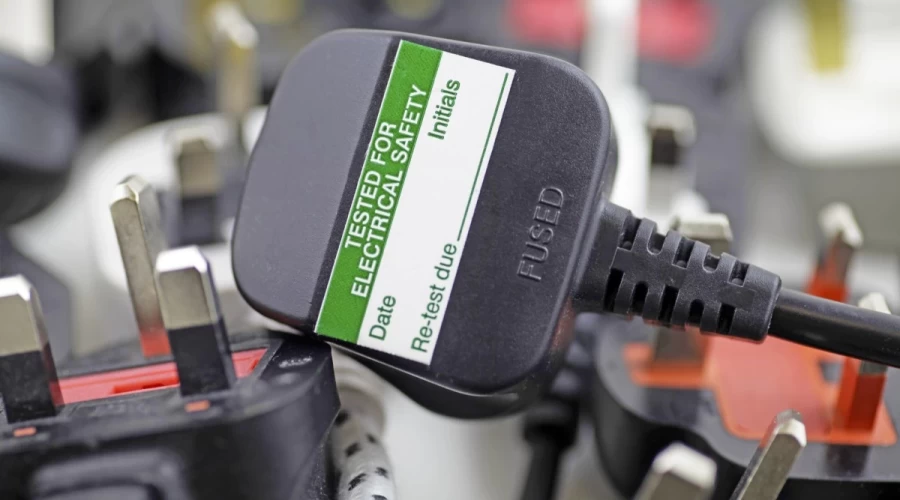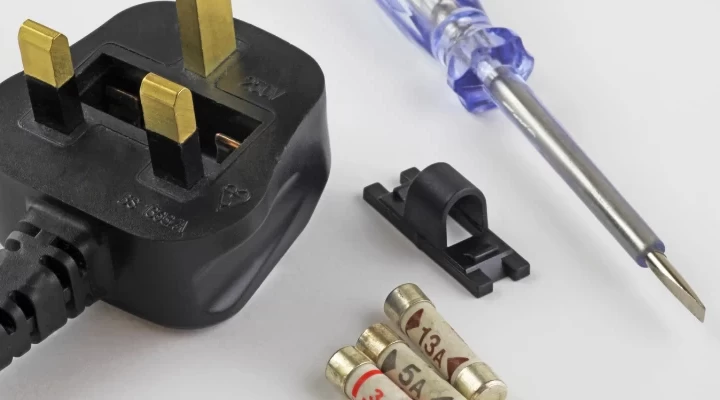A PAT test is important for both residential and commercial settings where electrical appliances are used, such as offices, factories, shops, and schools. By performing regular PAT testing, potential electrical hazards can be identified and resolved, ensuring that appliances are safe for use and minimizing the risk of accidents.
Table of Contents
- The importance of PAT testing.
- How is PAT testing carried out?
- What needs to be PAT tested?
- Is PAT testing a legal requirement?
- How long do PAT testing certificates last?
- Do new items need to be PAT tested?
- PAT testing labels
- What does PAT test certificates look like?
- Is PAT testing mandatory for landlords?
- Who can carry out a PAT test in a rental property?
- Can I do my own PAT test Certificate?
- Conclusion.
The importance of PAT testing.
PAT testing is essential for ensuring the safety of electrical appliance users. Faulty electrical equipment can pose a risk of electric shock, burns, or even fire, which can cause serious injuries or even fatalities.
PAT testing helps prevent such accidents by identifying any faults or damage in electrical appliances and ensuring they are repaired or replaced before they can cause harm.
Furthermore, Portable appliance testing helps individuals and businesses comply with legal requirements, which state that all electrical appliances must be maintained in a safe condition and regularly tested for safety.
How is PAT testing carried out?
PAT testing typically involves a combination of visual inspections and electrical tests. The process starts with a visual inspection, where the tester examines the portable electrical equipment for any signs of damage or wear and tear. They'll also check for signs of overheating, such as discolouration or burn marks.
Next, the electrical tests are conducted using specialized testing equipment. This involves measuring the appliance's electrical current and insulation resistance to ensure it's functioning correctly and doesn't pose a risk of electric shock or fire. If any faults or defects are found during the Portable appliance testing, the appliance may need to be repaired or replaced before it can be used again.
Importance of visual inspection:
Visual inspection is a critical part of the PAT testing process as it helps identify any visible signs of damage or wear and tear that could lead to electrical hazards. During the visual inspection, the tester will look for any cracks, breaks, or damage to the appliance and any loose or damaged wiring or plugs.
They'll also check that the plug in the appliance is being used correctly, with the appropriate cables and plugs. By performing a thorough visual inspection, potential hazards can be identified and addressed before they cause accidents.
Understanding electrical testing:
Electrical equipment testing is a crucial part of a PAT test, as it helps ensure that the appliance functions correctly and doesn't pose a risk of electric shock or fire. There are various types of electrical tests that can be carried out, including earth continuity testing, insulation resistance testing, and polarity testing.
Each test measures different aspects of the appliance's electrical function, and the results are used to determine whether the appliance is safe to use or requires repair or replacement.
Types of testing equipment used for portable appliance tests:
PAT testing requires specialized equipment to measure electrical current, insulation resistance, and other parameters. Various types of testing equipment are used for PAT testing, including a portable appliance tester, which can perform multiple tests on an appliance in one go, and a test meter, which can measure the electrical parameters of an appliance.
The type of test equipment being used will depend on the type of appliance being tested and the specific tests required. By using the right equipment, testers can ensure that the appliance is tested thoroughly and accurately and that any faults or defects are identified.
What needs to be PAT tested?

PAT testing should be carried out on any electrical appliance that can cause harm, either by electrical shock or fire. This includes portable appliances, such as kettles, toasters, hairdryers, and larger appliances, like fridges, ovens, and washing machines.
Other portable electrical appliances requiring testing include power tools, extension leads, and computer equipment.
It's important to note that not all appliances need to be tested at the same frequency. The testing interval will depend on various factors, such as the type of appliance, its usage, and the environment it's used in.
Is PAT testing a legal requirement?
Portable appliance tests are not a legal requirement, but it is recommended by regulatory bodies such as the Health and Safety Executive (HSE) and the Institute of Electrical Engineers (IEE). However, there are legal requirements for employers and landlords to ensure that all electrical appliances are safe to use, and regular PAT testing is one way to ensure compliance.
It's also worth noting that insurance companies may require proof of a PAT test to provide coverage in case of accidents.
How long do PAT testing certificates last?
The PAT testing frequency will depend on various factors, such as the type of appliance, its usage, and the environment it's used in. Some appliances may require testing every six months, while others may only need to be tested every few years. It's important to carry out a risk assessment to determine the frequency of testing and to keep a record of all tests carried out.
Do new items need to be PAT tested?
New appliances don't necessarily need to be PAT tested, as they should already meet safety standards. However, carrying out a visual inspection and testing is still recommended to ensure that the appliance is working correctly and doesn't pose a risk of electric shock or fire.
It's also important to note that any modifications or repairs made to an appliance may require it to be re-tested.
PAT testing labels

After an appliance has been PAT tested, it should be labelled with a sticker that indicates the date of testing and the next testing date. These labels make it easy to keep track of which appliances have been tested and when they are due for re-testing. The labels and test date also provide reassurance to users that the appliance has been tested and is safe to use.
What does PAT test certificates look like?
A PAT test certificate is a document that provides a detailed record of the testing carried out on an appliance. PAT certificates will typically include the following:
-
The name and address of the person or company carrying out the testing.
-
A list of the appliances tested.
-
The date of testing.
-
The test results.
Some certificates may also include recommendations for repairs or further testing.
Is PAT testing mandatory for landlords?
While portable appliance testing is not a legal requirement for landlords, they are required by law to ensure that all electrical appliances provided to tenants of rental properties are safe to use. Regular PAT testing is one way to ensure compliance with this requirement and to protect the safety of tenants.
Who can carry out a PAT test in a rental property?
PAT testing should only be carried out by competent individuals who have the necessary knowledge and skills to perform the tests safely and accurately. Landlords may choose to carry out the testing themselves, but they must ensure they are qualified. Alternatively, they may hire a professional PAT tester to carry out the testing on their behalf.
Can I do my own PAT test Certificate?
While anyone who has the necessary knowledge and skills can perform PAT testing, issuing a PAT test certificate requires a level of expertise and knowledge to ensure that the certificate is accurate and complies with regulatory standards.
It's recommended to hire a professional PAT tester to carry out the testing and issue the certificate to ensure that the testing is carried out thoroughly and accurately.
A professional PAT tester will also have access to the necessary equipment to perform the tests correctly and will be able to identify any faults or defects in the appliance that may require repair or replacement.
If you choose to carry out PAT testing yourself, it's important to remember that you will be responsible for ensuring that the testing is carried out accurately and that the certificates issued are compliant with regulatory standards. You will also need access to the necessary equipment to perform the tests correctly.
While it may be possible to carry out PAT testing yourself, it's important to consider whether you have the necessary knowledge and expertise to ensure that the testing is carried out accurately and that the certificates issued comply with safety regulations.

Conclusion.
In conclusion, PAT testing is an essential process for ensuring the safety of electrical appliances in both residential and commercial settings. Through a combination of visual inspections and electrical testing, potential hazards can be identified and addressed before they cause accidents.
PAT testing is not a legal requirement but is recommended by regulatory bodies such as the Health and Safety Executive (HSE) and the Institute of Electrical Engineers (IEE) to comply with legal requirements for employers and landlords to maintain their electrical equipment and appliances in a safe condition.
It's important to carry out a risk assessment to determine the frequency of testing and to keep a record of all tests carried out. PAT testing labels and certificates help track which appliances have been tested, when they are due for re-testing, and who carried out the testing.
While PAT testing can be carried out by anyone who has the necessary knowledge and skills, it's recommended to hire a professional PAT tester to ensure accurate and compliant testing and certification. By prioritizing PAT testing, individuals and businesses can ensure the safety of themselves and others while complying with legal requirements.






